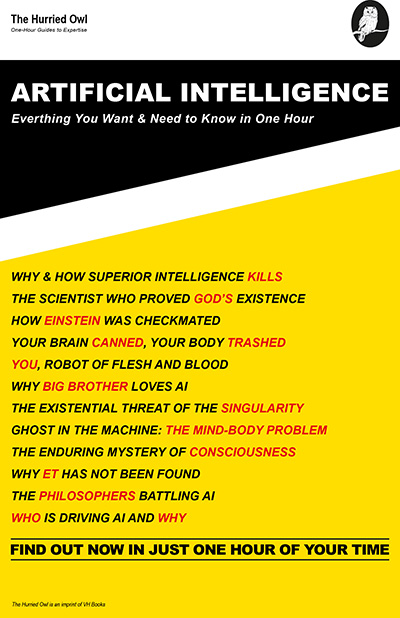Crypto Jitters: Unhinged Stablecoins Add Volatility to Unstable Market
Brave New World
The dig is impossible to resist. On Thursday, tether – the world’s biggest ‘stablecoin’ – briefly became untethered from its dollar peg. Tether’s value sank to 95¢ before recovering to 97¢
That may seem a minor oscillation but indicates a bigger issue that does not bode well. Stablecoins are supposed to be, well, stable and fully backed by readily convertible assets.
However, of late, the stablecoin universe has witnessed violent price swings and even implosions. TerraUSD (UST) last week crashed rather spectacularly after some minor initial wobbles not unlike those experienced by tether.
UST, an ‘algorithmic stablecoin’, hovered around the 90¢-mark for a little before dropping off the cliff. Its value plummeted to a low of 30¢ before regaining a bit of lost ground by climbing to 43¢ and then 81¢ – still a far cry from dollar parity.
The UST crash was followed by the even more nerve-wrecking descend of its sister cryptocurrency ‘luna’, used to stabilise the UST/USD peg. On Tuesday, luna all but evaporated, losing 97% of its value in barely 24 hours. It hasn’t staged a noticeable comeback yet.
In an eery replay of the Great Crash of 1929 – Black Tuesday – a luna-dedicated Reddit forum (u/TerraLuna) put up pinned posts with exhaustive lists of help lines around the world, including the US National Suicide Prevention Lifeline. Elsewhere on the forum, users shared their misery with some lamenting the loss of their entire life savings.
Luna’s crash pulverised an estimated $25 billion in market capitalisation. The Luna Foundation Guard, presided over by the token’s (and TerraUSD’s) founder Do Kwon (30), has appealed to unnamed hedge funds for an additional $1 billion in collateral.
Yesterday, Mr Kwon ordered a halt to his terra blockchain to prevent a governance attack on luna which had its market capitalisation nearly wiped out, in theory enabling a third party to hoover up more than half of all lunas in circulation – and gain control over the pseudo currency – for next to nothing.
Mr Kwon now supports a community initiative to mint fresh lunas to ease UST sell pressure. “Naturally, this is at a high cost to UST and luna holders,” he explained, “but we will continue to explore various options to bring in more exogenous capital to the ecosystem and reduce supply overhang on UST.” Mr Kwon’s apparently frantic search for cash mirrors the existential concerns of most Ponzi scheme operators.
Famous Last Words
User NoForever2056 had his lunas locked in a ‘staking pool’ – touted by US crypto trading platform Coinbase as a sort of savings account – when disaster struck and watched powerlessly how the value of his $17,000 worth of tokens plunged. Staking pools often promise returns of up to twenty percent to holders of stablecoin. NoForever2056 was unable to cash out before the tokens hit the floor: “I really believed in the project and the builders of the ecosystem. I didn’t get out because I got greedy and hoped it would go up more.” Famous last words.
Another user claimed to have lost more than $450,000 and feared he may now lose his house as well. In the comment sections of major newspapers and on social media, some of the now duped speculators used to respond to warnings with the sneer ‘OK, Boomer’ or worse. Cautionary tales were routinely dismissed out of hand and ascribed to ‘grandpa’s geriatric ignorance or fear of technology’. However, it was fear of missing out (FOMO) – and of course timeless greed – that attracted young speculators to crypto and its many derivatives in a replay of Money for Nothing.
Though stablecoins, usually pegged at parity to the US dollar, are unrelated to cryptocurrencies, they derive their existence from the need for near-instant settlement times in the digital asset market. Stablecoins also offer a temporary refuge for jittery speculators who long for a breather. When stablecoins lose their stability, a like degree of volatility spills over into the broader crypto market.
Swing Low
On Wednesday, crypto’s flagship token bitcoin fell another seven percent to $26,250 – its lowest level since December 2020 – before adding five percent in a series of hectic swings. Bitcoin appears to be looking for a floor that will support it. In another sign that the fate of the crypto universe is tied to that of stablecoins, the Luna Foundation Guard prepares to dump its sizeable stash of bitcoin on the market to generate enough ready cash to underpin its ailing luna token – pouring on additional sell pressure.
In a mostly unregulated and decentralised market there are no bailouts or other instruments to ensure stability and continuity. Fears of market contagion abound as investors re-evaluate crypto and are seen moving towards the exit.
Meanwhile, El Salvador and the Central African Republic – the only two countries that have embraced bitcoin as legal tender – are ‘buying the dip’. However, few are following their example. According to Swiss blockchain data cruncher Glassnode, nearly forty percent of bitcoin holders are currently ‘underwater’, i.e. have lost a slice of their cash. That percentage is higher still when considering short-term holders only. Just last month, close to sixteen percent of all bitcoin wallets dipped into the red which belies the oft-heard assertion that crypto can be deployed as an inflation hedge.
Glassnode also detected a big surge in ‘urgent transactions’ from users willing to pay a premium to have their trades expedited. In their report, Glassnode analysts conclude that bitcoin holders are seeking to de-risk or add collateral to margin positions.
Whilst trading volumes in global crypto market have ballooned, the world’s leading exchange Coinbase reported a staggering $430 million net losses in the first quarter ($1.98 per share), attributed to an exodus of users (-19%) and disappointing revenues. Analysts had expected a profit of 8¢ per share. To make matters worse, Coinbase management admitted publicly that its users’ deposits were ‘not necessarily’ protected if the exchange went bust. By now properly spooked, investors dumped Coinbase stock and halved the company’s valuation in under a week.
The recent crypto jitters do not point to a complete dismemberment of its universe. Just like traditional bank runs, depositors flee from unsound banks towards solid good ones. UST and tether holders have mostly swapped their unstable coins for tokens such as USD Coin perceived to be of a higher quality.
To see in the troubled crypto waters of the present the beginning of the end of a ‘dangerous fad’ would be premature and probably contain a measure of wishful thinking.
Cover photo: A scene from the 1927 film Metropolis, a dystopian masterpiece by German director Fritz Lang.


